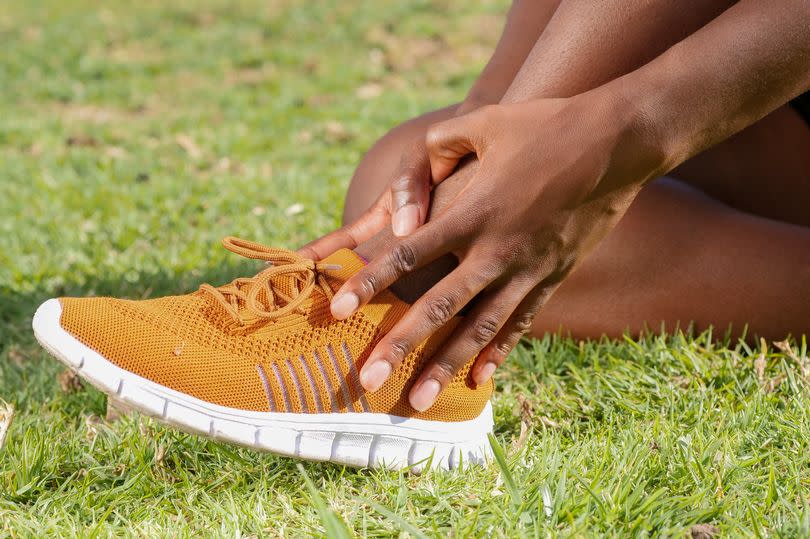Doctor says leg or ankle swelling could be early sign of painful condition

A vein specialist has highlighted the five key signs that you might be developing varicose veins and when it's time to start wearing compression socks on a daily basis. Varicose veins are surprisingly common, with one in three people experiencing them at some stage.
Recognising the early warning signs and taking action early is essential for managing this condition effectively. With the UK set to experience warmer temperatures this week, these symptoms could worsen due to increased dilation of veins and pooling of blood.
Dr Mark Bratby, the medical director at Veincentre, has outlined the subtle indicators that suggest you may need to incorporate compression socks into your daily routine. He warns: "Varicose veins can often start as a minor issue but, if left unchecked, they can lead to more serious complications such as skin ulcers or deep vein thrombosis. Early intervention with compression socks can help to manage symptoms and improve overall leg health."
Key early signs of varicose veins
Persistent leg fatigue
Persistent leg fatigue throughout the day can be an early sign of poor circulation, Dr Bratby notes. "If you often find your legs feeling heavy or tired, especially after long periods of standing or sitting, it could be a sign that your veins are struggling to pump blood efficiently," he explains.
Swelling in the lower legs and ankles
Swelling, particularly in the lower legs and ankles, is another key sign. "When the veins are not functioning properly, fluid can leak into the surrounding tissues, causing swelling," Dr Bratby explained. "Wearing compression socks can help reduce this swelling by encouraging blood flow back towards the heart."
Discomfort or pain
Leg discomfort or pain should not be ignored as it could signal the onset of varicose veins. "Many people dismiss aching or throbbing pain in their legs, attributing it to other factors like exercise or long workdays. However, persistent pain can be an indicator that your veins are under strain," Dr Bratby advised. "Compression socks can alleviate some of this discomfort by supporting your veins and improving circulation."
Visible vein abnormalities
"Noticeable changes in the appearance of your veins, such as bulging or darkening, should not be ignored," Dr Bratby cautioned. "These visible abnormalities often suggest that your veins are working overtime to circulate blood. Daily compression wear can help manage these changes by reducing pressure on the veins."

Itching and skin changes
Itching and changes in the skin around the veins, such as dryness or discolouration, are subtle signs that should prompt action. "These symptoms can indicate that blood is pooling in the veins, leading to inflammation and skin changes," Dr Bratby noted. "Compression socks can improve blood flow and help maintain healthy skin."
Proactive management
Donning compression socks daily, according to Dr Bratby, is an easy and useful approach for managing conditions and avoiding complications. He said compression socks "apply gentle pressure to your legs, supporting the veins and promoting better circulation", offering valuable benefits especially for those who are on their feet a lot.
Although they provide relief, compression socks can't cure varicose veins, as Dr Bratby warns: "If your symptoms are worsening, the only way to truly get rid of varicose veins is through treatment". In this regard, one wouldn't have to depend on compression stockings.
The treatment of varicose veins not only erases the veiny protrusions but also curbs other associated symptoms. Dr Bratby said: "Treatment effectively removes varicose veins and all associated symptoms like persistent leg fatigue, swelling, and discomfort, reducing the need for daily compression socks."
He added: "Post-treatment, patients typically experience significant improvements in quality of life, including reduced leg pain, enhanced mobility, and a more aesthetically pleasing appearance of their legs."

 Yahoo News
Yahoo News 
